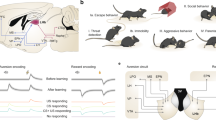Abstract
Species evolution has been fueled by the development of brain neurocircuitry and physical attributes to compete for food, partners and environmental niches. This neurocircuitry that was designed to respond to natural rewards has been the subject of considerable research effort given its importance to motivational behavior. Reward-related behaviors arc determined by a complex array of variables including how good we feel, how much we like or want a reward, competition with other rewards, reaction to the absence of a reward, societal values and accessibility to the reward—responses regulated by current and past experiences interacting with our genetic makeup. Understanding the neurobiology of hedonic tone (how good we feel) and the circuitry behind reward-motivated actions (how they are acquired, retained and regulated), particularly in contrast to habitual actions is essential, particularly as these are activities that substance abuse has provided an unfortunate model.
Access this chapter
Tax calculation will be finalised at checkout
Purchases are for personal use only
Similar content being viewed by others
References
Alberini, C. M., Milekic, M. H., & Tronel, S. (2006). Mechanisms of memory stabilization and de-stabilization. Cellular and Molecular Life Sciences, 63, 999–1008.
Aron, J. L., & Paulus, M. P. (2007). Location, location: Using functional magnetic resonance imaging to pinpoint brain differences relevant to stimulant use. Addiction 102(Supp), 33–43.
Balleine, B. W. (2005). Neural bases of food-seeking: Affect, arousal and reward in corticostriatolimbic circuits. Physiology & Behavior, 86, 710–717.
Balleine, B. W., Delgado, M. R., & Hikosaka, O. (2007). The role of the dorsal striatum in reward and decision-making. Journal of Neuroscience 27, 8161–8165.
Bryant, C. D., Zaki, P. A., Carroll, F. I., & Evans, C. J. (2005). Opioids and addiction: Emerging pharmaceutical strategies for reducing reward and opponent processes. Clinical Neuroscience Research, 5(1), 03–115.
Caulkins, J. P., Reuter, P., Iguchi, M. Y., & Chiesa, J. (2005). How goes the “War on Drugs”?. Santa Monica: RAND Corporation.
Gaveriaux-Ruff, C., & Kieffer, B. L. (2002). Opioid receptor genes inactivated in mice: The highlights. Neuropeptides, 36, 62–71.
Hiroi, N., & Agatsuma, S. (2005). Genetic susceptibility to substance dependence. Mol Psychiatry, 10, 336–344.
Koob, G. F. (1992). Neural mechanisms of drug reinforcement. Annals of the New York Academy of Sciences, 654, 17l–191.
Leshner, A. I. (1997). Addiction is a brain disease, and it matters. Science, 278, 45–47.
Miller, M., Vorel, S. R., Tranguch, A. J., Kenny, E.T., Mazzoni, P., van Gorp, W. G., & Kleber, H. D. (2006). Anhedonia after a selective bilateral lesion of the globus pallidus. The American Journal of Psychiatry 163, 786–788.
Milner, P. M. (1991). Brain-stimulation reward: A review. Canadian Journal of Psychology, 45, 1–36.
Pecina, S., Smith, K. S., & Berridge, K. C. (2006). Hedonic hot spots in the brain. Neuroscientist, 500–511.
Schafer, W. R. (2004). Addiction research in a simple animal model: The nematode Caenorhabditis elegans. Neuropharmacology 47(Suppl 1), 123–131.
Skoubis, P. D., & Maidment, N. T. (2003). Blockade of ventral pallidal opioid receptors induces a conditioned place aversion and attenuates acquisition of cocaine place preference in the rat. Neuroscience, 119, 241–249.
Skoubis, P. D., Lam, H. A., Shoblock, J., Narayanan, S., & Maidment, N. T. (2005). Endogenous enkephalins, not endorphins, modulate basal hedonic state in mice. European Journal of Neuroscience, 21, 1379–1384.
Wise, R. A. (2004). Dopamine, learning and motivation. Nature Reviews Neuroscience, 5, 483–494.
Author information
Authors and Affiliations
Corresponding author
Editor information
Editors and Affiliations
Rights and permissions
Copyright information
© 2019 Springer International Publishing AG, part of Springer Nature
About this chapter
Cite this chapter
Evans, C. (2019). The Neurobiology of Reward: Understanding Circuitry in the Brain that Shapes Our Behavior. In: Kelso, J. (eds) Learning To Live Together: Promoting Social Harmony. Springer, Cham. https://doi.org/10.1007/978-3-319-90659-1_11
Download citation
DOI: https://doi.org/10.1007/978-3-319-90659-1_11
Published:
Publisher Name: Springer, Cham
Print ISBN: 978-3-319-90658-4
Online ISBN: 978-3-319-90659-1
eBook Packages: Social SciencesSocial Sciences (R0)




